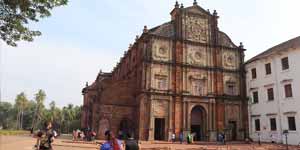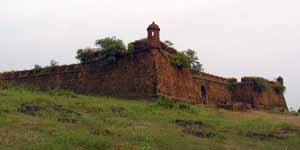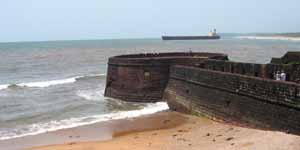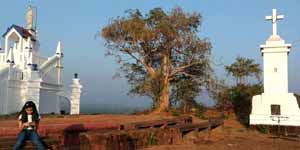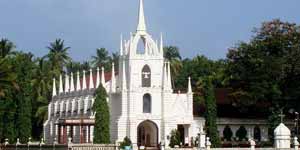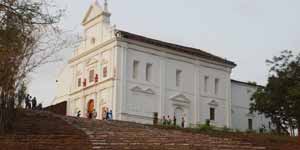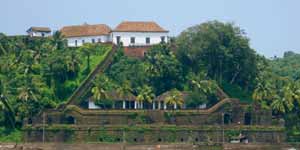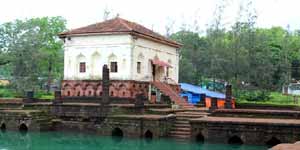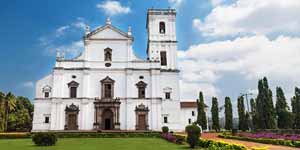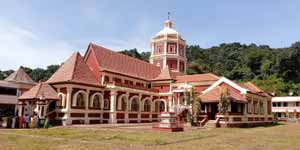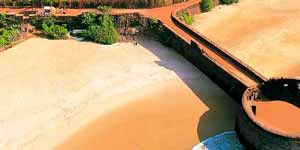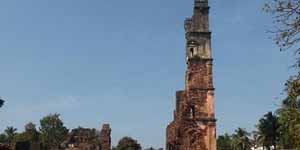
St. Augustine Tower
At a distance of 8 km from Panjim Kadamba Bus Stand, 27 km from Vasco Da Gama Railway Station and 23 km from Mapusa, Church and Monastery of Augustin is situated in Old Goa. It is one of the prime Goa tourist places. This place is part of UNESCO World Heritage Site (Churches & Convents of Goa).
The Church and Monastery of St Augustine were built in 1572 by 12 Augustines when they arrived in the city of Goa. The construction of the church was completed in 1602 AD. They also built a convent besides the church. A ban was imposed by the Portuguese government against the Augustines. The church and the convent thereafter were deserted.
The ruins of 46 m high Bell Tower without the bell can be seen from some distance and attract visitors. The four storied arched belfry tower built of laterite of the church facing east. This tower is one of the four towers of St. Augustine Church. The Church had eight richly adorned chapels and four altars and a convent with numerous cells. The ruins of these can be seen even today around the tower. The bell was first placed in the Fort Aguada Light House, where it remained from 1841 to 1871 AD. Finally it was put in the church of Our Lady of Immaculate Conception at Panaji in 1871 AD and it is still in working condition.
The ruins of St. Augustine Church also known as Nossa Senhora da Graca Church are a very popular tourist attraction and one of the most spectacular monuments in Goa. The St. Augustine Church was considered to be one of the greatest of three Augustinian churches. Now, only the ruins of the front portion of the church and magnificent tower remain. Today most of the remaining buildings and churches are maintained by the Archeological Survey of India and the church services are maintained by the Archdiocese of Goa.
Monuments in Goa
Monuments In Goa If your planning to come on a holiday to Goa, dont ever miss a chance to explore the monumental wonders that flavour this palm-fringed place! Tourists from all over the world cluster here to muddle up with the golden sand and beaches of Goa. Surprisingly very few people are aware of the fact that besides, being a beach state, this place is actually a treasure trove of architectural marvels. You will be amazed to see an impressive array of medieval European architecture - an exclusive interweaving of Portuguese-Gothic style with a Tuscan exterior and Corinthian interior - exhibited inside the walls of these spectacular monuments. The sheer scale and proportion of the country mansions together with the magnificence of its interiors makes them the grandest of all country mansions.
A monument is a statue, building, or other edifice created to commemorate a person, event or as an artistic object. They are frequently used to improve the appearance of a city or location. The Ancient Monuments and Archaeological Sites and Remains Act, 1958 defines an Ancient Monument
Ancient Monument means any structure, erection or monument, or any tumulus or place of interment, or any cave, rock-sculpture, inscription or monolith which is of historical, archaeological or artistic interest and which has been in existence for not less than 100 years and includes:- remains of an ancient monument, Site of an ancient monument. Such portion of land adjoining the site of an ancient monument as may be required for fencing or covering in or otherwise preserving such monument,The means of access to, and convenient inspection of, an ancient monument.
Some of the beautiful monuments of goa are:- Viceroys Arch Goa, Statue of Abbe Faria Goa, Azad Maidan Goa, Goa Medical College Goa etc.
The calm churches, rugged forts, exquisite temples and grandiose country mansions of Goa attract countless tourists from all over the world. So, feel the pleasure of visiting these numerous structures that highlights this beautiful beach land of India.


